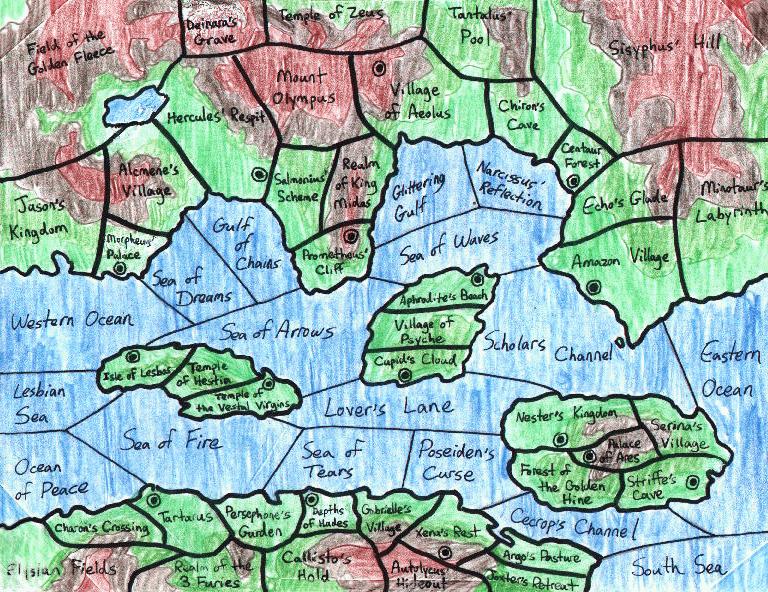



| Sail Ho!A New Diplomacy Variantby "Tarzan" |
|---|
Standard Diplomacy has always suffered from the problem of simply not having enough players around for a game. While the Internet has increased the number (and diversity) of players, it is not always easy to recruit enough players for a game, especially a Real Time (RT) or Face-to-Face (FTF) game.
A while back I "discovered" Andy Schwarz' Hundred Years' War variant. This variant cleverly pits three players against one another. The beauty behind Andy's variant is that the game quickly (if not immediately) moves to the "mid-portion" of a Diplomacy game. That is, the neutral SC's are quickly acquired and the three players find themselves face-to-face with adversity. We all enjoy this variant very much and some of us even went on to organize a tournament, which was fairly sucessful.
By the very design of Andy's Hundred Years' War variant, alliances among players either don't exist or are very short lived. Around the time that I came to this realization, I was conducting my "Interview with Manus Hand". Through our discussions, I came to realize that both he and I very much enjoyed "convoying." This started me thinking.
Very few (if any) variants emphasize the "convoy" order. I did a rather extensive search through many different variants to see if any of them were more "encouraging" of convoys. Through this search I made an interesting discovery. Although there are variants for a number of different players, I found no variants for four players. Thus, my "mission" took shape -- to create a four-player variant that encourages convoys. I also wanted this variant to be readily playable Real Time (RT), by E-Mail (PBEM) and Face-to-Face (FTF).
I created Sail Ho! in a "backwards" fashion. That is, first I conceptualized four players, their strengths and weaknesses, and their game opening options. Then I went on to design the map. I initially planned on Sail Ho! taking place in ancient Greece, when military forces sailed the high seas and made frequent conquests. However, the working "backwards" manner in which I created Sail Ho! made this less realistic. In the end I chose to use a "ficticious" map. However, to keep true to my original intent, the map spaces names are often taken from Greek mythology and folklore.
The Sail Ho! map consists of two continents and three islands. The three islands are positioned in such a way that at least two powers come into "conflict" over each island. There are a total of sixteen SC's on the Sail Ho! map, nine SC's located on the two continents and seven SC's located on the three islands. Since nine SC's are required for a solo victory, a player must either capture all the SC's on the continents or must capture some of the island SCs. Thus, the islands take on a fair amount of importance in this variant.
North
West
EastSouth | ||||||||
There are four powers in Sail Ho! -- North, South, East and West.
North owns two SC's located on the northern portion of the northeastern continent. North starts the game with two armies and is thus the only power who does not have a fleet at the start of the game. This relative disadvantage is balanced by North's relatively good defensive position and room for expansion.
West owns the two SCs located on the western most island. West starts the game with two fleets and is thus the only power to start with two fleets (essentially the mirror image of North's profile). West has many different opening strategies and offensive options, which are balanced by the fact that West may come into immediate conflict with any of the three powers at the start of the game.
East and South each start the game with one army and one fleet and are thus more balanced. They are both in a position to convoy their army to one of the islands during the first Fall season. However, they also each may face conflict with the other powers (including one another).
So far, no single power has stepped forward as the "dominant force" or the "weak force" in this variant. I attribute this to the balanced design of Sail Ho! and hope this trend continues (making Sail Ho! so enjoyable). A list of the Sail Ho! games, the various openings attempted by each power (and their success/failure rates) and the Sail Ho! Hall of Fame (HoF) can all be found on the Sail Ho! homepage. Additionally, special aknowledgement is given to any Sail Ho! player who wins one game as each of the four powers.
Before ever having played a Sail Ho! game I asked my play-testers to rank each of the four powers in terms of Offensive Potential, Defensive Potential and Overall Desirability. At the conclusion of a game I again asked the players these same questions. My play testers indicated that they felt West had the most potential, while North had the least potential. Interestingly, to date we have had one Northern victory, one Eastern victory and no Western or Southern victories. As with any new variant there's always a learning curve. Perhaps that's what is operating here? Only time will tell.
| Sail Ho! Players Survey | ||||||||
|---|---|---|---|---|---|---|---|---|
| Before Playing | After Playing | |||||||
| North | South | East | West | North | South | East | West | |
| Offensive Potential | 2.0 | 3.0 | 1.7 | 3.3 | 1.8 | 2.7 | 1.7 | 3.9 |
| Defensive Potential | 2.0 | 2.4 | 2.6 | 3.1 | 2.0 | 2.6 | 2.4 | 3.0 |
| Desirability | 1.6 | 3.1 | 2.0 | 3.4 | 1.9 | 2.8 | 1.8 | 3.4 |
As of the writing of this article two Sail Ho! games have been completed, another four games are in progress and three more games are gathering players. Sail Ho! has been played with and without press and has been played RT and PBEM with much success. Sail Ho! is also supported by Mapper. For more information on Sail Ho! check out the Sail Ho! homepage.
I'd like to thank all my play-testers (who are growing more numerous every day!) Since many of you are in games currently "in progress" and since many of these games are Gunboat I will not individually name you. However, I very much appreciate the time you spent filling out my surveys, answering my questions, and generally having fun playing Sail Ho! Thank you all.
 |
Tarzan ([email protected]) |
If you wish to E-Mail feedback on this article to the author, click on the letter above. If that does not work, feel free to use the "Dear DP..." mail interface.

